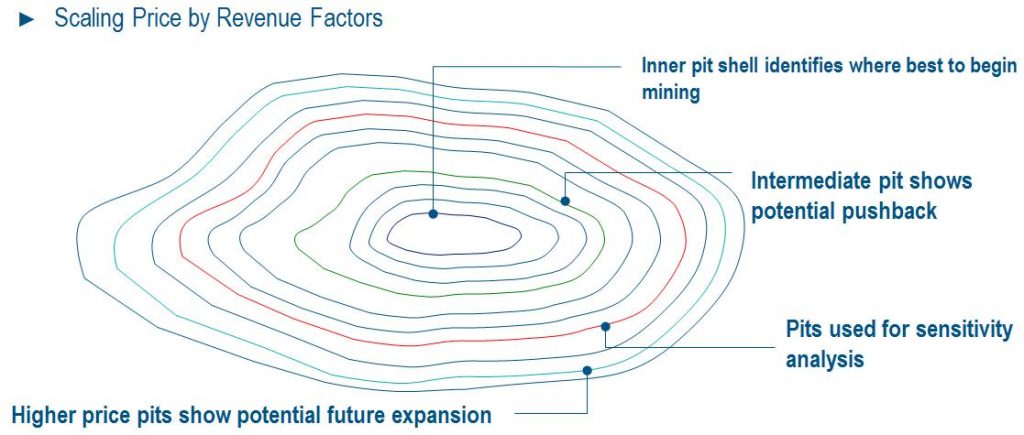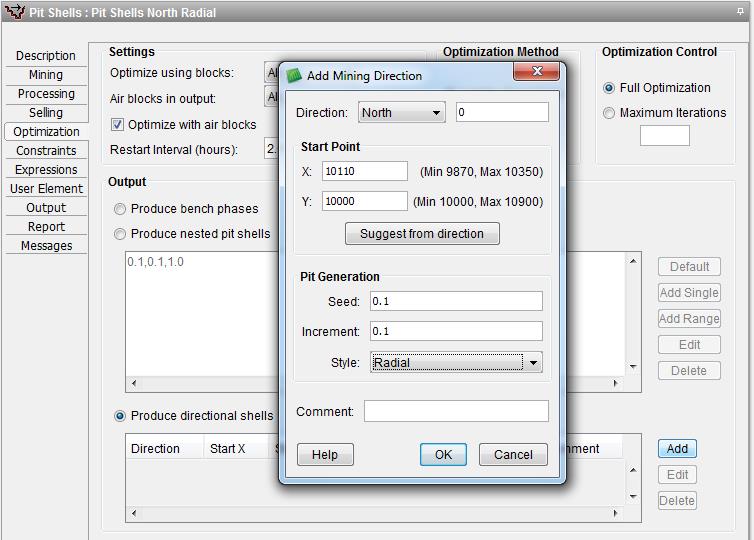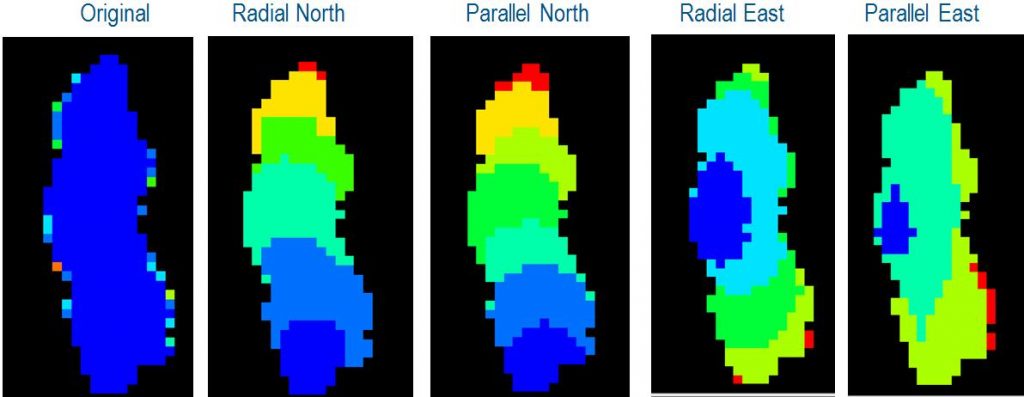In today’s post, I will outline an alternative to Revenue Factor based pit stages in GEOVIA Whittle: using Mining Direction.
The standard Whittle process of defining pit stages or pushbacks for scheduling is to use nested shells that are created by adjusting the price with revenue factors. Smaller pit shells are created at lower prices and bigger shells at higher prices. This approach is used for a number of reasons as illustrated in Figure 1:

Figure 2 shows an example of eight pit shells created using revenue factors. Pit stages are then selected using tools such as NPV Practical Pushbacks or Minimum Mining Width.

However, the revenue factor based pit shells do not always produce practical stages, depending on the shape and the dip of the orebody, so an alternative approach may be required for pushback generation.
The “Produce directional shells” option can be selected as an alternative to “Produce nested shells”, under the Optimization tab of the Pit Shells node in Whittle, as shown in Figure 3:

This option allows you to select a Mining Direction, a Start Point for pit shell generation (can be automatically calculated using “Suggest from direction” option), a Seed fraction (for smaller or bigger starter pit) and an Increment fraction (to increase/decrease number of pit shells generated).
It also provides two pit shell styles – Parallel or Radial, depending on the desired shape.
The final pit limits will still be generated using the standard pit optimization process. To use a final shell that is different from a Revenue Factor 1 pit shell (for example a Revenue Factor 0.9 pit shell), simply multiply the price by a relevant Revenue Factor under a Selling tab of the Pit Shells node.
Figure 4 illustrates an example of pit shells created using Mining Direction, followed by pit stages selection and modification using the Mining Width tool.

This option is particularly useful for bulk commodities when no practical staging can be created using revenue factors.
Figure 5 illustrates such an example of pit optimization for a homogenous shallow orebody, when pit size is not incremental to price variation, as per ‘Original’ image on the left.
Images to the right of the ‘Original’ image illustrate the different mining sequence options that can be explored.

For more flexible and complex Mining Direction definitions, refer to Whittle Help > How to’s and general techniques > Advanced techniques > Mining Direction.
You may also be interested in Converting a Definition tab Into a Report Template in Whittle.

